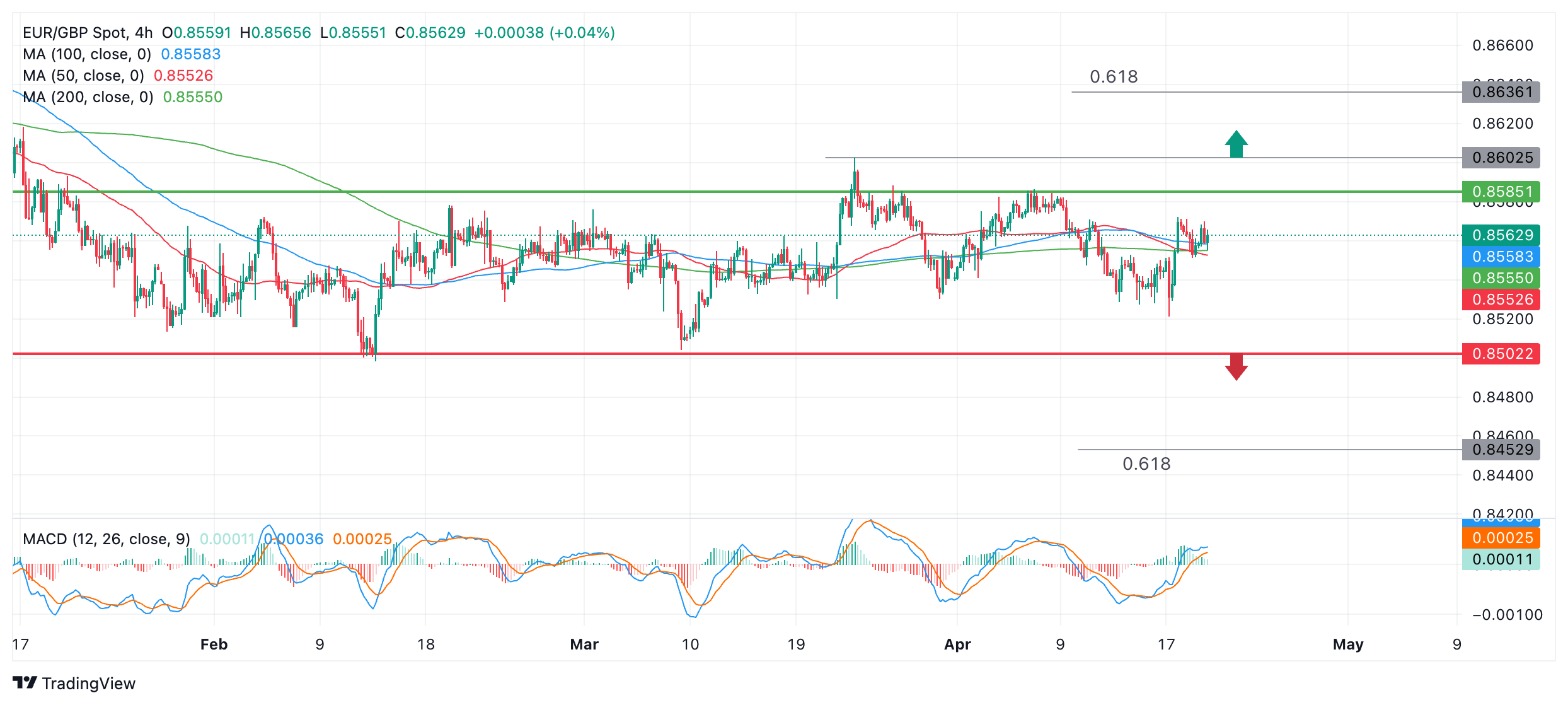- EUR/GBP is in a sideways trend that has lasted for three months now.
- This trend is expected to continue, but at what point would a range breakout be considered to occur?
- How far are these ruptures expected to go?
The EUR/GBP price is in a sideways trend that has been developing for three months. Based on technical analysis, the existing trend is expected to continue until tests point to a trend reversal. Since there is no evidence that EUR/GBP has changed trend, the conclusion must be that it will continue to trade sideways.
However, it is a useful exercise to estimate at what levels the end of the sideways trend will have been evaluated and a new bullish or bearish trend will be said to have begun.
EUR/GBP 4-hour chart

One method of achieving this is to establish the ceiling and floor levels of the range. If the price breaks above or below these levels, it will likely indicate that the trend has changed. An upward breakout will likely indicate that a new uptrend is starting and vice versa for a downward breakout.
Although the range formed by the EUR/GBP does not appear to have exact high and low limits, it is possible to make a rough estimate of where the top and bottom are.
The bottom is easier to estimate as there have been two lows that have bottomed at the same level, 0.8502. This is illustrated by the horizontal red line in the graph above.
The ceiling of the range is less defined. The sideways market high was reached on March 22 at 0.8602 (circled).
Another level that could be a ceiling is at 0.8585, where the price has peaked on two separate occasions (green horizontal line) and even at 0.8571, where the price has peaked several times (green dotted line).
Which of the three should be chosen is a matter of choice. However, a principle of technical analysis is that a level becomes important the more times it is tested, so the hypothetical ceiling should have been touched at least more than once.
This rules out the March 22 high, which was only reached once. The next level at 0.8585 offers a good compromise as it has been touched twice and lies between the range high of 0.8602 and the multi-touch level of 0.8571. This intermediate level is the one that has been chosen for this analysis.
When price breaks out of a range, it usually travels a distance that can be roughly calculated based on the height of the range. The conservative goal for determining how far a breakout will travel is to take the 0.681% Fibonacci ratio of the range height and extrapolate it from the upper or lower limit.
According to this forecasting method, a break above the range top at 0.8585 is expected to move towards a target at 0.8636. For its part, a break below the lower limit of the fluctuation band would target 0.8453.
These movements would constitute considerable deviations from the central tendency of the range and would therefore likely also indicate a change in the short-term trend: from sideways to bullish for an upward breakout, and from sideways to bearish for a downward breakout. . As such, they constitute a key test to assess whether the trend may have changed.
A break above the March 22 high would be further confirmation of a breakout to the upside, as there is always a risk of the price retesting the level and then falling back into the range.
To avoid false breakout signals, only decisive breakouts above or below the range's high or low should be considered indicators of a valid breakout. A decisive breakout would be one characterized by a longer than average daily candle that pierces the floor or ceiling and closes near its minimum or maximum respectively, or three consecutive candles that pierce above or below the level.
Source: Fx Street
I am Joshua Winder, a senior-level journalist and editor at World Stock Market. I specialize in covering news related to the stock market and economic trends. With more than 8 years of experience in this field, I have become an expert in financial reporting.







